Complete Guide to SOCKS Proxy - How to Securely Bypass Blocks, Safe Torrenting, Free Proxy List, Anonymous Proxies, Access Restricted Content
 The internet is in a strange place right now. It’s no longer the open, free place it used to be. Increasingly, users are being subject to website blocks, attacks, and surveillance. For true safety or anonymity, precautions must be taken. Thankfully, there many ways for you to protect yourself, one of them being Socket Secure (SOCKS) proxies.
The internet is in a strange place right now. It’s no longer the open, free place it used to be. Increasingly, users are being subject to website blocks, attacks, and surveillance. For true safety or anonymity, precautions must be taken. Thankfully, there many ways for you to protect yourself, one of them being Socket Secure (SOCKS) proxies.
While many have heard about SOCKS Proxies not many truly understand their purpose, how they work and the security-privacy levels they can offer. SOCKS proxies are often mistakenly considered an alternative or equivalent to VPNs causing major confusion amongst users and providing false sense of security.
In this article we'll be covering a wealth of topics relating to SOCKS Proxies, SSL, Configuration advise, Torrenting via SOCK, compare them with VPNs and much more so let's take a quick look at what we have in store before diving deeper:
- Introduction to SOCKS Proxies
- Understanding how HTTPS Encryption - SSL & HTTPS Proxies work
- How SOCKS5 Proxy Works
- Why Would I Use a SOCKS5 Proxy?
- When to Use SOCKS5 Proxies, VPN or Both
- Combine a SOCKS5 Proxy and a VPN
- SOCKS5 Proxy vs VPN for Torrenting and P2P
- Configuring SOCKS5 Proxy for Torrenting (qBittorrent, uTorrent)
- Configuring Firefox and Chrome to Use SOCKS5 Proxy
- Free Proxy vs Paid
- Using SOCKS5 Proxy for US Netflix
Introduction To SOCKS Proxies
Like HTTP, SOCKS is an internet protocol, but it offers a further degree of anonymity. Connecting to a SOCKS proxy routes your traffic through a third-party server via TCP, assigning you a new IP address in the process. Because the IP address is different, web hosts can’t determine the physical location.
This has the add-on effect of bypassing regional filtering. However, unlike a VPN, SOCKS doesn’t provide encryption. This means users don’t have true privacy and aren’t safe from attacks on Public WiFi and government surveillance. In addition, SOCKS doesn’t run through every application, meaning regular browsing is not always safe.
However, this lack of encryption does provide some benefits. The main one is speed. A SOCKS proxy doesn’t need resources to encrypt traffic and has far less overhead, so it’s usually faster than a VPN. Though proxies don’t provide protection from monitoring, they are a nice middle ground between HTTP and VPNs.
The security of a SOCKS proxy also depends on the version it utilizes. Most modern proxies use either SOCKS4 or SOCKS5 to protect users, and there are some fundamental differences. As you would expect from a lesser version, SOCKS4 has fewer features.
One example is the lack of support for UDP protocol-based applications. This cuts out programs that need faster, more efficient transfers, like games. SOCKS5 also supports IPv6 and Domain Name Resolution. This means the client can specify a URL rather than an IP address. This feature is also supported by SOCKS4a.
As well as SOCKS, users can utilize the HTTP/HTTPS proxy method. HTTP proxies work similarly to SOCKS5, but utilize the HTTP protocol instead. This is the same method that transfers data to your computer when you type https://www.firewall.cx. These proxies fetch and receive primarily in HTTP and are generally used for web browsers. Some applications support HTTP proxy, others SOCKS proxy, and many both. HTTP is more intelligent than SOCKS5, but also less secure.
Due to lack of UDP support and limited TCP support, HTTP proxies don’t fully support torrenting. Often, they will filter out this type of data or block it. This blocking is especially prevalent in public HTTP proxies. In addition, HTTP tries to re-write the headers of the data in transit. The result is extremely slow or non-existent torrenting.
Understanding How HTTPS Encryption - SSL & HTTPS Proxies Work
HTTPS proxies utilize something called the Secure Socket Layer. In your browser, you’ll notice this as a green padlock next to the URL bar:
![]()
In short, SSL creates a secure connection between the web server and the user’s browser. When you request a URL, the server sends your browser a copy of its SSL certificate. The browser verifies that it’s authentic, and the server then sends back a signed acknowledgment. Upon arrival, both start an SSL encrypted session and can share data safely.
This encryption uses a method called public key cryptography. A server using SSL has both a public key and a private key. When a server first negotiates an SSL session with a client, it sends a copy of its public key. The client’s browser verifies the certificate and then uses the public key to create a symmetric key which is then sent to the server. The private key is never sent and always kept secret.
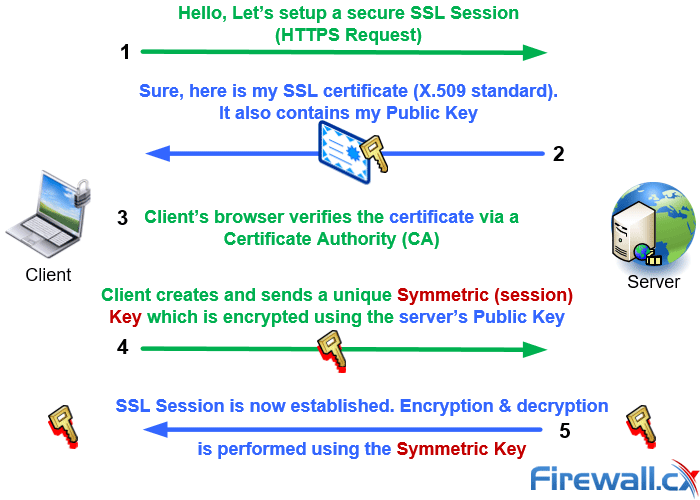
The symmetric key is unique to the SSL session and used to encrypt/decrypt data exchanged between the client and server.
HTTPS proxy works slightly differently. Using the CONNECT method, requests are converted to a transparent tunnel. However, this feature isn’t available in a lot of proxies and, when it is, users can still be vulnerable.
Some versions of SSL are still open to attack through the Heartbleed bug. This serious vulnerability was discovered in 2014 and allows attackers to steal private keys from servers, eavesdropping on communications and gaining access to passwords, emails and instant messages. Vulnerabilities in SSL and its predecessor TLS have been found several times since then, including man-in-the-middle attacks that downgrade the user to a less secure version.
How SOCKS5 Proxy Works
While an HTTP proxy is designed to work in the web browser, a SOCKS5 proxy is more wide-reaching. SOCKS sits on the higher levels of the OSI model, below SSL, which sits on the seventh application layer, and above TCP and UDP on the transport layer (Layer 4). This offers several advantages. TCP works by forming a physical connection between the client and the server, trying to guarantee that every packet arrives at the destination in the same order it was sent. To do this, it puts all the content into a fixed format.
Another use of UDP is in the Domain Name System (DNS), which allows for translation of URLs into IP addresses. The combination of both TCP and UDP creates a more flexible and reliable experience.
The low level of SOCKS5 also means it can handle several different request types: HTTP, HTTPS, POP3, SMTP and FTP. As a result, SOCKS5 can be used for email, web browsing, peer-to-peer and more. More importantly, users can do this in a somewhat anonymous fashion.
When you connect to a website, the traffic usually runs through a firewall on the router or by the ISP. A SOCKS5 proxy routes your data through its proxy server, creating a path through the network’s firewall. In doing so the user is assigned an IP address, which makes it look like they’re browsing from a different location and protects their identity.
As mentioned before proxies don’t encrypt data like a VPN, which means you can access these services with very little slowdown. This is because there is no need to re-write header data. This, in turn, leads to less chance of errors, and fewer errors means more speed.
Although it doesn’t handle encryption, SOCKS5 does provide methods of authentication, as mentioned earlier. In general, a SOCKS5 handshake looks like this:
- The client sends a connection request, stating the list of authentication methods it supports.
- The server looks at these methods and chooses one. In the case that none are acceptable, it sends a failure response.
- Once accepted, information can pass between the client and server. The client can send a connection request and the server can respond.
This authentication removes many of the security concerns that plagued SOCKS4. The proxy isn't open to anybody with the details, resulting in less chance of malicious attacks. Usually, authentication comes in the form of a simple username and password combination. However, SOCKS5 also supports GSSAPI (Generic Security Services Application Program Interface) and IANA methods.
Why Would I Use a SOCKS5 Proxy?
Now that you know the features of SOCKS5 proxies, you may be wondering why you even need one. One of the main uses is to circumvent internet censorship. If your ISP blocks access to movie streaming websites, The Pirate Bay or other questionable content, a proxy will circumvent it. This can be useful on restricted networks. Work and school connections are often monitored and block access to social media, games, and anything else that isn’t relevant. Broad sweeping policies can often cause issues if you need to access one of those sites for research or you just want to slack.
You’ll also be able to access services that are limited to certain countries. BBC iPlayer, for example, is only available from a UK IP address. A proxy located in the UK would allow you to watch British TV without a TV license. This also applies to services like Netflix, which has significantly more content in the US region than others. Utilizing a SOCKS5 proxy from several different locations can significantly expand your viewing catalogue.
On home networks, users must be careful about their privacy, especially when torrenting. Using a SOCKS5 proxy can provide fast download speeds while adding a layer of protection against copyright holders. Many BitTorrent clients support a weak form of encryption when using SOCKS5, which prevents further obstacles.
SOCKS5 torrenting doesn’t offer the same protection as a VPN, but it’s better than nothing at all. In addition, it can give an obscured connection from only one application on your PC. As a result, you can perform fast P2P downloads while still using location services such as Google Maps. You’ll retain your normal download rate for any other browsing or streaming.
When to use SOCKS5 Proxies, VPNs or Both
For the privacy and security conscious, VPNs are a great option. They are superior to a SOCKS5 proxy in almost every way. The Best VPN Service Providers give unparalleled protection from government agencies, copyright holders and hackers. Many of them even provide proxy services as a free add-on. Other than speed, VPNs do everything SOCKS5 does and more. However, VPN subscriptions can be more expensive and require extra setup to run. In some situations, a proxy is the most economical option.
When it comes to accessing content with region restrictions, for example, a SOCKS5 proxy is great. You can easily spoof a different location, and don’t have to worry too much about security – repercussions are rare. You can find a proxy from almost every country on the planet, often free of charge. A VPN will provide the same benefit, but comes from a trusted provider who has put considerable thought into the safety and privacy of its users.
SOCKS5 proxies can hide your identity from web servers. Low stakes tasks like voting on polls multiple times from the same computer are fine. Most don’t make use of cookies or JavaScript to track the same browser across multiple IPs.
However, if you’re accessing blocked content, things are a little different. While a proxy is good for low stakes, it doesn’t remove identifying information other than the IP address. It’s open to snooping from anyone with access to your data stream, such as your ISP and government. Accessing censored file-sharing websites and other questionable content is best done through a VPN.
This lack of protection from those with network access can pose considerable risk in public. No encryption means little protection from prying eyes. On a WiFi hotspot, attackers can still see and interpret your data. Browsing websites without SSL encryption could result in password and information compromises. Furthermore, the previously mentioned security issues in SSL mean that hackers could get hold of it even then. For public WiFi safety, a VPN is the only true option.
Combine a SOCKS5 Proxy and a VPN
It’s clear that there are some merits to using a proxy over a VPN. The extra speed makes them suitable for a wide range of low-risk tasks. It’s advantageous to be able to utilize both a VPN and a SOCKS5 proxy. Thankfully, any of the Best VPN service providers supply this at no extra cost. Strong VPN is a great example of this. Switching the two methods in and out is a no-brainer, but what about using both at once?
Using both in tandem usually results in increased privacy, if it’s supported by your VPN provider. Be that as it may, the benefits are limited. If a VPN is connected already, you probably won’t see speed increases. Instead, the advantage comes as a safety net. If your VPN cuts out and the Kill-Switch fails, you still have some protection from SOCKS5 VPN proxy, and vice versa. This is relevant if a provider hands over your details – the copyright holder will only see the IP address of the other service. Using both creates an extra barrier to entry.
For most users, this extra barrier is far from essential. A properly configured VPN should pose little problem. However, if you’re doing something particularly sensitive the combination is a good option. For the best security, you should email your provider and make sure your SOCKS5 VPN proxy has no logs.
SOCKS5 Proxy vs VPN For Torrenting & P2P
Speaking of torrenting, it’s important to be aware of the benefits and limitations of using a VPN SOCKS5 proxy for it. SOCKS5 torrenting will show only the IP address of the proxy server if a media company is looking through a certain swarm and provides a small amount of encryption. This gives the small degree of protection mentioned earlier.
However, there are still many avenues of attacks for copyright holders. The encryption method torrent clients use is shaky and not reliable. It can be cracked quickly, revealing the information beneath. Although this wouldn’t reveal the user’s IP address, it could give information such as the version of the client, the operating system, settings and download speed. Copyright holders could use this to narrow down to an individual user and their ISP. They can then send a legal request to that ISP for information. The lack of proper encryption means the ISP can clearly see what a user is doing on its network.
SOCKS5 torrenting does provide an increase in speed, but it comes at a price. A determined copyright troll or government entity may still get leverage over the user. In the end, it’s up to the individual to decide if the speed increase is worth the risk. This will probably depend on how significant the difference is.
SOCKS5 VPN proxies come with an additional caveat. A fully-fledged VPN won’t just protect you from copyright holders, it will also bypass ISP throttling. It’s becoming increasingly common for service providers to set speed limits on peer-to-peer downloads, resulting in speeds that are as much as one fifth of normal speed. Service providers can only do this if they can interpret and categorize the data, so VPN encryption provides a natural wall.
Proxies do not generally provide encryption, and you may experience significant throttling. This can easily offset the speed gains of SOCKS5, so proxies are only the best option if your ISP does not throttle. You can test for throttling though web services like Glasnost. Even with the encryption built into torrent clients, most service providers can tell if you’re using P2P. If you’re unsure, you can always test with a free proxy.
Configuring SOCKS5 Proxy for Torrenting
Thankfully, setting up a SOCKS5 proxy for torrenting is very simple. It requires fewer steps than a VPN, and all you’ll need is a torrent client. In our examples, we’ll be showing uTorrent and qBittorrent, using a VPN SOCKS5 proxy from Strong VPN. Both providers give the functionality free of charge and provide a premium service and no logs policy.
Set up a SOCKS5 Proxy with IPVANISH and qBittorrent
To emphasise the divide between the two services, IP Vanish’s SOCKS5 details can’t be found in the regular VPN client. Instead, you’ll have to go to the My Account section of its website and click on the SOCKS5 Proxy tab.
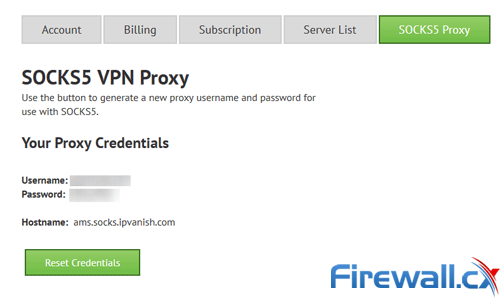
You’ll want to note down these credentials for use later. The username and password are specific to you, and provide the SOCKS5 authentication mentioned earlier. The hostname, ams.socks.ipvanish.com, is thanks to SOCKS5 and its Domain Name Resolution feature. If you’re using a different proxy, just take note of those details instead.
For an extensive review on Strong VPN, including security tests, DNS Leak tests, Torrent Protection, Kill-Switch test, Netflix support and much more, read our Best VPN Review: Strong VPN
Now, in qBittorrent, head to Tools > Options. On the left-hand side, you’ll see the Connection tab. Click it. You should be presented with the following menu:
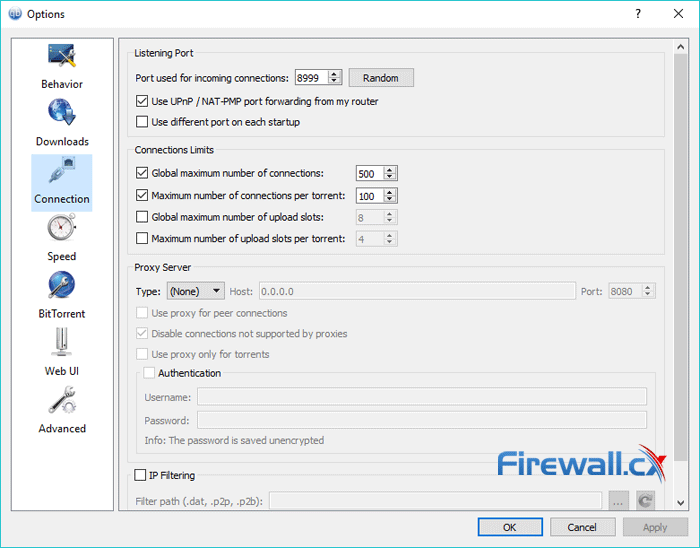
Under the Listening Port heading, disable Use UPnP/NAT-PMP port forwarding from my router. Then input the following details under Proxy Server:
- Type: Socks5
- Host: ams.socks.ipvanish.com
- Port: 1080
- Use proxy for peer connections: Yes
- Disable connections not supported by proxies: Yes
- Use proxy only for torrents: Yes
- Authentication: Yes
- Username: IP Vanish SOCKS5 generated username
- Password: IP Vanish SOCKS5 generated password
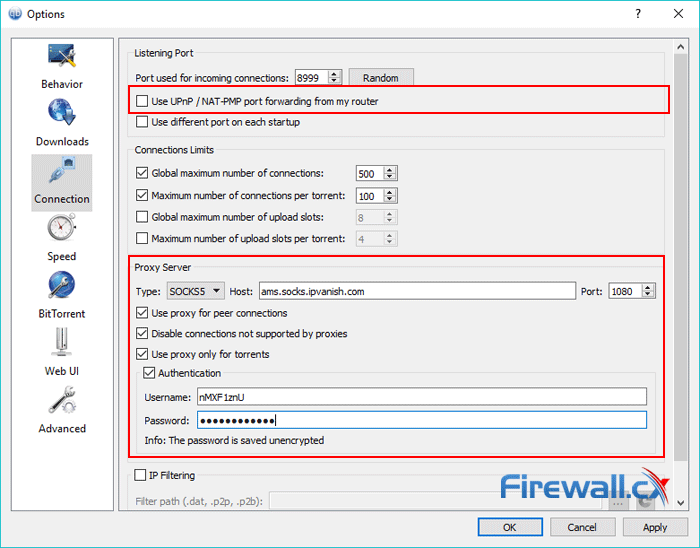
For extra privacy, head to BitTorrent and change Encryption mode to Require encryption. This will force the in-application encryption discussed earlier. Also tick Enable anonymous mode. This will remove the peer ID from the client’s fingerprint and force all incoming connections through SOCKS5.
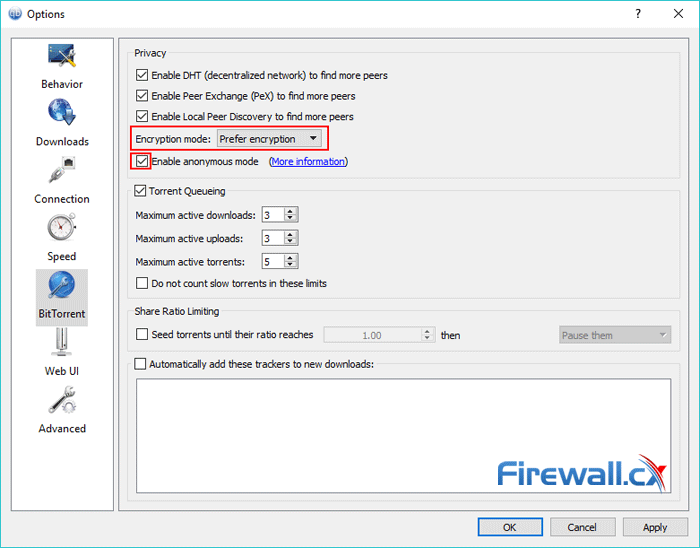
Finally, hit Apply and Okay. Restart qBittorrent just to be safe.
Set Up a SOCKS5 Proxy With Private Internet Access & uTorrent
Finding your SOCKS5 VPN proxy settings for Private Internet Access is equally simple. Go to the client sign in page and login with your username and password. Scroll down until you see a heading with the label PPTP/L2TP/SOCKS Username and Password. Click Generate Username and Password and note down the details:
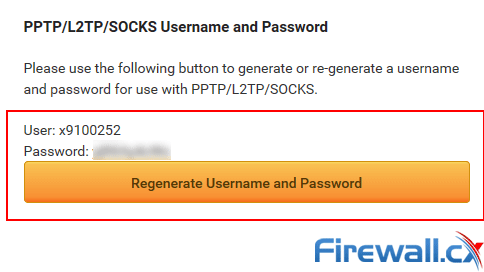
The hostname isn’t listed here, but a support article reveals that it’s proxy-nl.privateinternetaccess.com.Write that down too, or the details of your free proxy. Launch uTorrent and go to Options > Preferences (Ctrl + P).
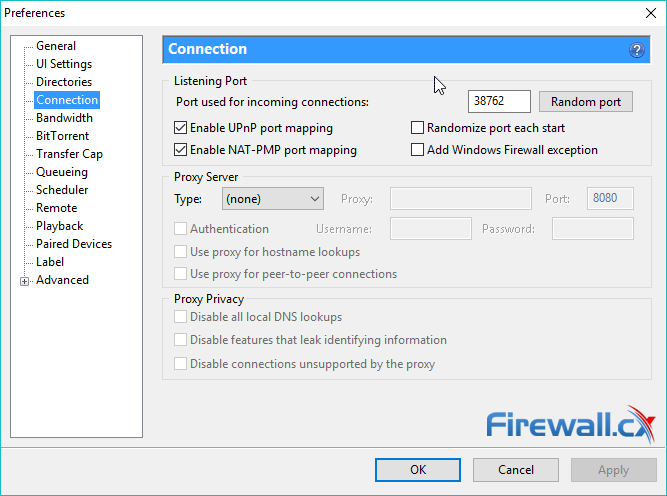
Under the Connection subheading, disable Enable UPnP port mapping and Enable NAT-PMP port mapping. Then enter the following settings under Proxy Server:
- Type: SOCKS5
- ·Proxy:
- Port: 1080
- Authentication: Yes
- Username: PIA SOCKS5 user
- Password: PIA SOCKS5 password
- Use proxy for hostname lookups: Yes
- Use proxy for peer-to-peer connections: Yes
- Disable all local DNS lookups: Yes
- Disable all features that leak identifying information: Yes
- Disable connects unsupported by the proxy: Yes
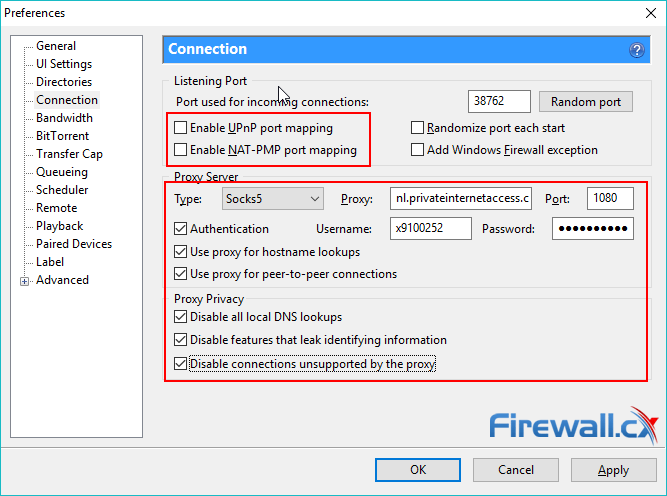
To enable encryption, go to the BitTorrent subheading and look under the Protocol Encryption menu. Change Outgoing to Forced. Be aware that this could impair your ability to connect to peers. Click Apply and OK. SOCKS5 torrenting is now enabled.
Configuring Firefox and Chrome to Use SOCKS5 Proxy
Configuring your browser to use SOCKS can be a little more difficult. At this moment in time, neither Chrome nor Firefox support SOCKS5 with authentication by default. Instead, you can use the Maxthon browser. After install go to Settings > Advanced > Proxy Settings.

Now tick Use custom proxy setting and hit Manage Proxy. Click Add. Fill in the fields as follows:
- Name: IPVanish SOCKS5
- Type: SOCKS5
- Address: ams.socks.ipvanish.com
- Port: 1080
- Username: IP Vanish SOCKS5 generated username
- Password: IP Vanish SOCKS5 generated password
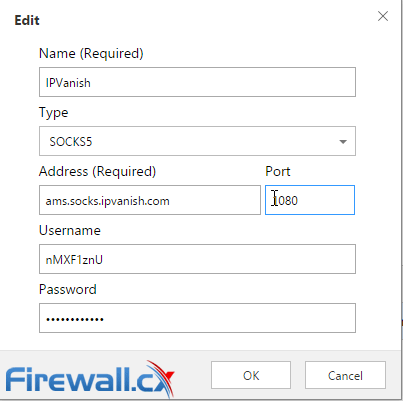
Hit OK. Below the config, you’ll see a Bypass proxy server for heading. Here you can set exceptions for websites for which you need to keep your local IP, such as Google Maps. You can also switch this to Use proxy server for and only use the VPN SOCKS5 proxy on certain websites.
Free Proxy vs Paid
Though premium paid SOCKS5 proxies like the one above are often best, it’s possible to get one free of charge. Many websites even compile free proxy lists that are open for anyone to use. Here are just a few examples:
- https://www.socks-proxy.net/
- https://incloak.com/proxy-list/
- https://www.gatherproxy.com/sockslist
- https://fastproxyservers.org/socks5-servers.htm
If you already have a VPN, you may have access to a free SOCKS5 proxy without even knowing it. It’s becoming increasingly common for the Best VPN service providers to offer this service. Some of the major ones include:
It may be tempting to just grab the first free SOCKS proxy you see, but there are a few things to consider. A free anonymous proxy isn’t going to be fast. It’s more common for download speeds to sit in the kilobytes rather than megabytes. You’ll also notice far less reliability, so you’ll probably have to switch between different servers for long downloads. This unreliability extends to response time.
In addition, a free anonymous proxy often lacks security. In many cases, they have no security at all, leaving users open to hackers. In many cases free providers keep logs, which may cause issues for P2P downloads and other illegal activities.
In all, you’ll be hard pressed to find a good, reliable free proxy. If you want to protect your identity, paying is almost essential. In some cases, you can pick up a full VPN service for the same price or less than premium SOCKS5 services, making it a no-brainer. You’ll have access to strong encryption when you need it, and a proxy when you’re just looking for speed.
Using SOCKS5 Proxy For US Netflix
One of the best uses of a SOCKS5 proxy is for Netflix. The catalogue of the service has been limited of late, and people outside the US seem to be particularly affected. Thankfully, you can trick Netflix into giving you shows from regions across the world. Here’s my Netflix UK homepage before using a proxy:
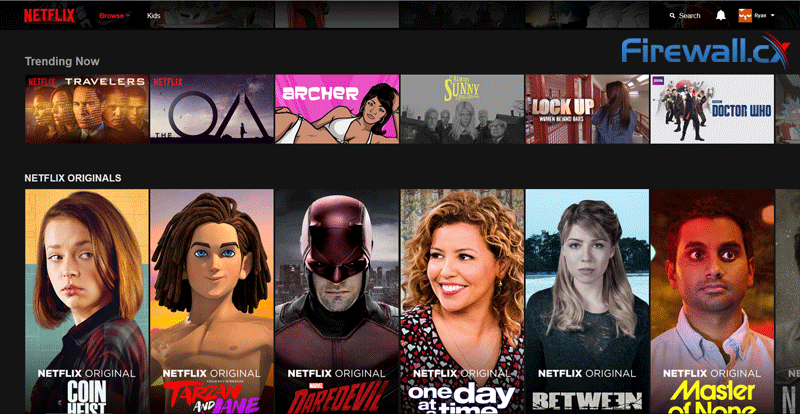
In this example, we’ll be using Firefox. Go to the flyout menu on the top right, then select Options. Go to Advanced and click the Network tab. Under Connection > Configure how Firefox connects to the Internet, click Settings…

First, change Configure Proxies to Access the Internet to Manual proxy configuration. Under SOCKS Host enter the URL or IP address of your proxy server. Under Port, enter the number your Netflix SOCKS5 proxy has provided. Tick SOCKS v5 and Proxy DNS when using SOCKS v5.
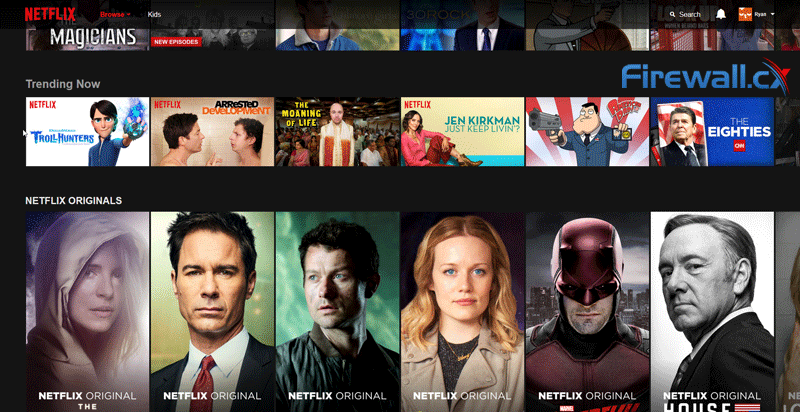
You can now click OK and head to https://netflix.com. You should immediately notice a change in your browsing catalogue.
Unfortunately, those with a free SOCKS proxy may get stuck here. Netflix monitors proxy lists and blocks them to stop users accessing content they aren’t supposed to. You’ll know if you receive the following error when trying to play a show:
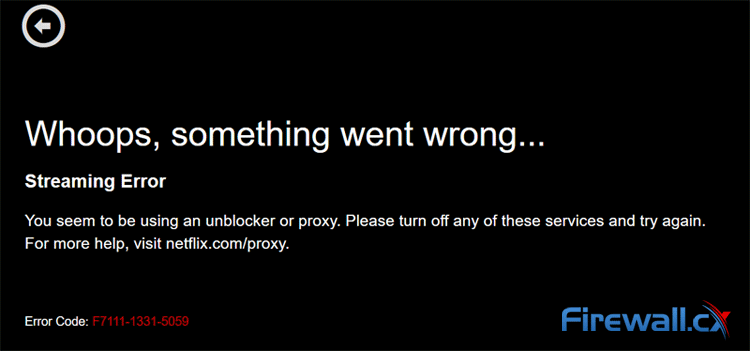
Trying to access Netflix US via Free SOCKS Proxy fails
You may be able to find a free proxy that Netflix hasn’t gotten around to yet, but it’s quite unlikely. A paid, private SOCKS5 proxy is less likely to be blocked, as the provider changes things often. You should notice much faster buffering times, so it’s worth paying the small monthly fee.
Most VPN SOCKS5 proxies use authentication, which isn’t supported by Firefox or Google Chrome. Instead, you’ll want to use the previously mentioned Maxthon browser method. This should give you fast, unblocked access to different films.
Summary
While SOCKS5 proxies offer better protection than HTML or nothing at all, they don’t shield the user from spying by ISPs or government. Free anonymous proxies offer even less protection, and can be open to hackers, cut out, or have slow download speeds. However, subscription-based proxies remain a great way to bypass regional blocks and carry out other, low-risk tasks.
Unfortunately, the price of a standalone SOCKS5 proxy is high compared to other services. In many cases, users can get a VPN subscription from STRONGVPN, Private Internet Access or NordVPN and a VPN SOCKS5 proxy for the same monthly fee. This gives users access to the full, hardened security of a VPN, while also providing a fast, less secure proxy if they need it.
Your IP address:
57.141.6.6
Wi-Fi Key Generator
Follow Firewall.cx
Cisco Password Crack
Decrypt Cisco Type-7 Passwords on the fly!













